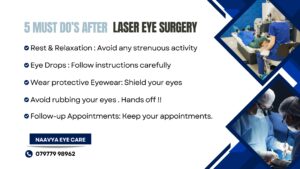Introduction
Glaucoma isn’t a single disease; it’s a complex group of conditions. In fact, it’s one of the leading causes of irreversible blindness worldwide. But the good news? With early detection and understanding of its risk factors, vision loss is often preventable. This article dives into the two primary types of glaucoma—angle-closure and open-angle—and explores the specific factors that can increase your risk. Let’s look at how you can take proactive steps to protect your eye health.
Understanding the Basics of Glaucoma: Two Main Types
Glaucoma affects the optic nerve, and the damage often begins silently, with no obvious symptoms at first. By the time changes in vision become noticeable, significant nerve damage may have already occurred. There are two primary types of glaucoma, each with unique characteristics and risk factors.
Angle-Closure Glaucoma
Angle-closure glaucoma is often more abrupt and can develop suddenly when the drainage angle in the eye becomes narrow or completely blocked. This angle serves as the pathway for the eye’s fluid (known as aqueous humor) to drain, and when it’s obstructed, the pressure within the eye can increase rapidly. This sudden increase in pressure can cause severe pain and blurred vision and often requires emergency treatment.
Open-Angle Glaucoma
Open-angle glaucoma is the most common form and develops more slowly over time. Here, the drainage angle remains open, but the trabecular meshwork—the tissue responsible for draining the fluid—becomes partially blocked. As a result, pressure builds up gradually, often without noticeable symptoms until there’s a significant loss of vision. Because it’s asymptomatic in its early stages, regular eye exams are essential for detection.
Risk Factors for Angle-Closure Glaucoma
Angle-closure glaucoma is heavily influenced by anatomical factors, making certain people more predisposed to it based on their eye structure and health history. Below are some key factors that can increase the risk of this type.
Anatomical Eye Structure
Some people naturally have a narrow drainage angle in the eye, putting them at a higher risk for angle-closure glaucoma. This anatomical feature is often genetically determined and more common in individuals of Asian descent.
Age and Lens Changes
As we age, the eye’s lens thickens, which can further narrow the angle and increase the risk of blockage. This is why routine eye exams become even more crucial with advancing age.
Medications
Certain medications, such as antidepressants and drugs with anticholinergic properties, can increase the likelihood of angle-closure glaucoma by causing pupil dilation, which may narrow or block the angle in susceptible individuals.
Risk Factors for Open-Angle Glaucoma
Angle-closure glaucoma is heavily influenced by anatomical factors, making certain people more predisposed to it based on their eye structure and health history. Below are some key factors that can increase the risk of this type.
Age
Open-angle glaucoma is more prevalent in people over 40, which is why ophthalmologists often recommend starting routine eye exams at this age, even if no vision problems are evident.
Family History of Glaucoma
If you have a close family member who has been diagnosed with glaucoma, your risk increases significantly. Genetic factors play a large role, so knowing your family’s eye health history can help with early detection and monitoring.
Systemic Health Conditions
Certain health conditions such as diabetes, hypertension, and atherosclerosis can increase the risk of open-angle glaucoma. These conditions affect blood flow and nerve health, making regular eye exams essential for early detection.
Ocular Factors and High Myopia
People with a high degree of nearsightedness (myopia) are at an increased risk of developing open-angle glaucoma. Other eye conditions, such as diabetic retinopathy or retinal vein occlusion, also raise the risk due to compromised blood flow and increased intraocular pressure.
Long-Term Use of Steroids
Prolonged use of corticosteroids, whether in the form of eye drops, oral medication, or topical applications, has been linked to an increased risk of glaucoma. Steroids can increase intraocular pressure, especially in those who are “steroid responders,” or genetically predisposed to this response.
Eye Injuries or Trauma
Past injuries, even from years ago, can increase the risk of open-angle glaucoma. Trauma can damage the drainage system in the eye, leading to increased intraocular pressure, so if you’ve experienced any eye injury, it’s essential to inform your eye doctor for a more comprehensive assessment.
Proactive Steps to Reduce Your Risk
Although certain risk factors are out of your control, there are still effective ways to reduce your chances of developing glaucoma and to protect your vision.
Regular Eye Exams
Scheduling routine eye exams is your best defense. Most eye professionals recommend a comprehensive exam every 1-2 years for those over 40, especially if any risk factors are present.
Manage Systemic Health Conditions
Maintaining good overall health by controlling blood pressure, blood sugar, and cholesterol levels can help reduce the risk of glaucoma. Regular check-ups with your physician to manage these conditions can indirectly protect your vision.
Inform Your Doctor of Medications and Health History
Ensure your eye doctor is aware of all medications you are taking and any family history of glaucoma. This information helps your provider assess your risk accurately and recommend necessary precautions or treatments.
Conclusion: Taking Charge of Your Eye Health
Glaucoma may not have a cure, but with awareness and proactive steps, you can protect your vision and maintain a high quality of life. Understanding the types of glaucoma and recognizing your risk factors can make all the difference. Schedule that eye exam, know your family history, and stay informed about any changes in your health. Vision is one of life’s most precious gifts, and with the right approach, you can help preserve it for years to come.





